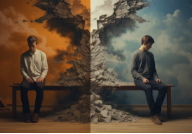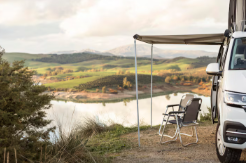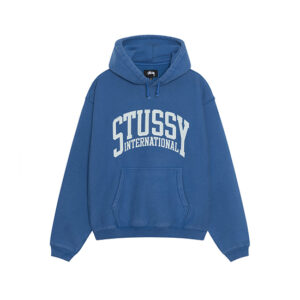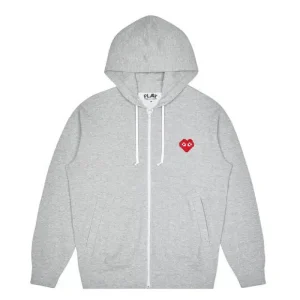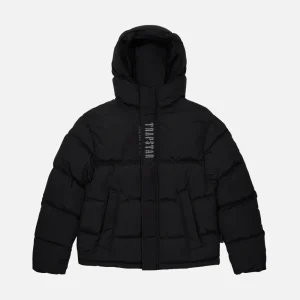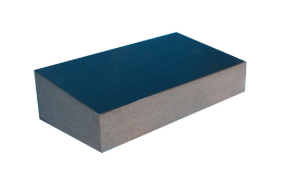Power Beneath Your Feet: Discover the Magic of Floor Graphics
In today’s fast-paced world, visual communication plays a crucial role in shaping experiences, conveying messages, and guiding people through spaces. While billboards, posters, and digital screens dominate at eye level, the ground beneath our feet is emerging as a surprisingly effective medium. Floor graphics transform ordinary walking surfaces into tools of communication, branding, education, and engagement. From enhancing customer experiences to ensuring safety, floor graphics combine creativity with functionality, redefining how we interact with the environments we traverse daily.
What Are Floor Graphics and Why They Matter
Floor graphics are printed visuals applied directly onto surfaces like tiles, concrete, carpet, or vinyl. Unlike conventional stickers, they are engineered with high-quality vinyl, slip-resistant laminates, and adhesives that allow both durability and easy removal. These features make them ideal for both temporary campaigns—like trade shows or festivals—and long-term installations in retail, hospitals, offices, and public spaces.
Their main purposes include:
- Guiding foot traffic and improving wayfinding
- Highlighting promotions or events
- Enhancing aesthetic appeal and branding
- Providing educational or interactive experiences
- Delivering safety and informational messages
By occupying the underutilized floor space, floor graphics create a visually impactful yet non-intrusive communication platform.
From Ancient Practices to Modern Uses
Using floors for decoration and messaging is not new. Ancient civilizations such as the Romans, Egyptians, and Indians incorporated mosaics, painted tiles, and rangoli designs to convey cultural, religious, or social messages. These early practices served both aesthetic and functional purposes, like guiding visitors or marking important areas.
In the 20th century, industrial printing, vinyl materials, and adhesive technology enabled the production of modern floor graphics. Airports began using directional floor markers, while retailers leveraged them to highlight sales or promotions. Today, digital printing allows high-resolution, colorful, and durable designs suitable for indoor and outdoor applications, making floor graphics an innovative and versatile communication tool.
Production Techniques and Materials
High-quality floor graphics rely on materials and production techniques designed for longevity and safety:
- Vinyl Sheets – Flexible, durable, and widely used for indoor and outdoor applications
- Protective Laminates – Slip-resistant, scuff-resistant layers that preserve the print
- Adhesives – Strong but removable without damaging floors
- Digital Printing – Produces high-resolution, vibrant visuals
- UV Protection – Ensures outdoor graphics resist fading under sunlight
- Eco-Friendly Materials – Recyclable vinyl and water-based inks for sustainable production
Production typically involves designing, printing, laminating, cutting, and professional installation to ensure durability and visual appeal.
Types of Floor Graphics
- Vinyl Decals – Cost-effective, versatile, and widely used across industries
- 3D and Optical Illusions – Create depth and engagement, commonly used in retail and exhibitions
- Temporary Graphics – Ideal for events, festivals, or short-term campaigns
- Permanent Graphics – Long-lasting installations for hospitals, offices, or schools
- Outdoor Graphics – Weatherproof options for sidewalks, parks, and public spaces
- Custom Shapes and Designs – Footprints, arrows, logos, or thematic illustrations
These types allow customization according to the intended audience, location, and purpose.
Industry Applications
Retail & Marketing
Retailers use floor graphics to guide shoppers, highlight promotions, and create immersive experiences. Seasonal trails, footprints leading to discounted products, or 3D illusions capturing attention are common strategies. Studies indicate that shoppers follow floor cues more readily than wall signage, increasing engagement and sales.
Transportation Hubs
Airports, metro stations, and bus terminals use floor graphics for wayfinding, queue management, and safety. Clear visual cues reduce confusion and improve the flow of passengers during peak times.
Education & Learning Spaces
Schools and universities implement floor graphics to enhance learning and navigation. Math games, alphabet trails, or interactive pathways transform hallways into educational spaces. Universities rely on color-coded paths to guide students efficiently across sprawling campuses.
Healthcare
Hospitals and clinics use floor graphics to improve navigation, manage patient flow, and communicate safety protocols. Pediatric wards incorporate playful graphics to create a stress-free environment for children, while slip-resistant laminates ensure safety in high-traffic areas.
Hospitality & Tourism
Hotels, resorts, and tourist attractions employ floor graphics for branding, decoration, and navigation. Seasonal or themed visuals enhance guest experiences, while cultural trails and guided paths enrich tourism activities.
Corporate Branding & Safety
Corporate offices utilize floor graphics for branding, motivational messaging, and demarcation of restricted or hazardous zones. Industrial workplaces use them to indicate safe walkways and operational boundaries.
Sports & Entertainment
Stadiums, arenas, and event venues leverage floor graphics for crowd management, sponsorship visibility, and immersive experiences. Interactive and thematic graphics engage audiences while enhancing the visual appeal of the environment.
Benefits Over Traditional Media
- High Visibility – Positioned along walking paths, ensuring messages are noticed
- Cost-Effective – Less expensive than billboards, banners, or digital screens
- Durability – Resistant to wear, scratches, spills, and heavy traffic
- Safety – Slip-resistant coatings reduce accidents
- Non-Intrusive – Utilizes underused surfaces without cluttering walls or ceilings
- Interactive Potential – Encourages engagement through play or interactivity
- Customizable – From simple shapes to complex 3D visuals
- Time-Sensitive Messaging – Quick installation and removal for temporary campaigns
- Accessibility – Supports navigation for people with disabilities or cognitive challenges
- Environmentally Friendly Options – Recyclable materials and sustainable inks
Design Principles for Maximum Impact
- Color and Contrast – Essential for visibility and readability
- Message Clarity – Short, concise, and direct messaging works best
- Strategic Placement – Align with foot traffic and natural sightlines
- Safety and Compliance – Ensure non-slip surfaces and safe materials
- Interactive Features – Games, trails, or illusions increase engagement
- Accessibility Considerations – Inclusive designs for all users
Effective design combines aesthetic appeal with practical guidance, creating an immersive experience for viewers.
Accessibility and Wayfinding
Floor graphics provide intuitive navigation, reducing confusion in complex spaces. Hospitals use arrows and color-coded paths, airports guide travelers through terminals, and schools create playful trails for students. Clear, consistent, and visible designs are especially important for differently-abled individuals, ensuring inclusivity.
Creative and Interactive Approaches
To maximize impact, floor graphics can incorporate:
- Gamification – Educational games, mazes, and hopscotch
- 3D Optical Illusions – Engaging and memorable visuals
- Thematic Designs – Seasonal or campaign-specific visuals
- Photo Opportunities – Encouraging social media sharing
- Hybrid Physical-Digital Experiences – AR, QR codes, or app-based interactions
These strategies enhance visitor engagement, increase recall, and make spaces more dynamic.
Environmental Responsibility and Sustainability
Sustainability is increasingly integrated into floor graphics production. Manufacturers use eco-friendly vinyl, water-based inks, and biodegradable adhesives. Reusable temporary graphics reduce waste, while permanent installations can be made from recyclable materials. This approach minimizes environmental impact and aligns with corporate social responsibility.
Technological Advancements and AR/VR Applications
- AR Integration – Floor graphics can trigger digital experiences through mobile devices
- Smart Surfaces – Self-cleaning or responsive surfaces enhance usability
- Interactive Learning – Museums and schools use digital overlays on physical graphics
- Immersive Installations – Projection mapping combined with floor visuals creates hybrid experiences
Technology expands the potential of floor graphics, making them interactive, adaptive, and increasingly versatile.
Global Trends and Adoption
Floor graphics are adopted worldwide across various industries:
- Asia: Retail marketing, exhibitions, and interactive learning
- Europe: Public art, cultural storytelling, and pedestrian navigation
- North America: Workplace safety, corporate branding, and retail guidance
Despite cultural differences, the common objective is clear: using floor graphics to communicate effectively, creatively, and safely.
Challenges and Solutions
- Durability Issues – Use weatherproof, UV-resistant, and laminated materials for outdoor or high-traffic areas
- Maintenance Requirements – Regular cleaning preserves clarity and safety
- Regulatory Restrictions – Removable and eco-friendly adhesives ensure compliance
- Design Complexity – Simplified, high-contrast visuals prevent confusion and improve readability
With proper planning, material selection, and professional installation, these challenges are manageable.
Conclusion
Floor graphics are a versatile, durable, and engaging tool that transforms underutilized surfaces into dynamic communication platforms. They enhance navigation, branding, education, and safety, while offering unique opportunities for creativity and interactivity. Their adaptability, cost-effectiveness, and environmental potential make them indispensable across industries and global contexts. As innovation continues to expand their capabilities, floor graphics will increasingly redefine how we experience and interact with the spaces beneath our feet.


